Despite a wave of drownings on Hawaii’s beaches, some visitors continue to ignore warnings, believing they’re immune to the dangers. According to the state, the rate of visitor drownings compared to residents is about 10 to 1. While this behavior clearly represents a minority of visitors, it’s nonetheless alarming how often these incidents occur. In just the past few days, three lives were lost in avoidable incidents.
This brings the question to the forefront again: why do so many people disregard the information designed to protect them?
As these tragic events continue to mount, it becomes clear that these visitors—whether out of overconfidence, a sense of invincibility, or simply a refusal to believe the risks apply to them—keep putting their lives on the line.
The vacation mindset: Why we feel invincible.
Many travelers arrive in Hawaii believing nothing bad can happen in paradise. This mindset explains why some plunge into the ocean without fully understanding its rip currents, and some attempt demanding hikes like the Kalalau trail without grasping the physical challenges. There are warnings, but many overlook them, convinced their vacation won’t be marred by disaster.
As one BOH visitor noted: “It’s heartbreaking each year when people on vacation make poor choices they wouldn’t make at home. They want to live their dream in one trip, and unfortunately, that leads to tragedies.”
Social media’s role in risk-taking.
Visitors arrive in Hawaii with Instagram and TikTok images of serene beaches and epic adventures, unaware of the dangers hidden just out of sight. Social media amplifies the vacation mindset, pushing tourists to take risks in pursuit of the perfect photo.
Reflecting on the lack of warnings, Katie commented: “Tourists need clearer information to make informed decisions and avoid these tragedies.”
Many are willing to push boundaries in the race for a stunning photo or viral video. As Rob T. pointed out: “Flotation, flotation, flotation. Just take a small, inexpensive bodyboard, and you will always have your own ‘lifeguard’ attached to you… Who cares if you look goofy? You will be alive!”
Despite these safety tips, many prioritize their social media image over their well-being, often skipping basic precautions.
Visitor overconfidence and its risks.
Overconfidence is one key reason safety warnings are ignored. Many assume that their experiences, whether swimming, snorkeling, or hiking in other places, have prepared them for Hawaii’s unique conditions. Unfortunately, this belief often leads to dangerous situations.
This false sense of readiness leads tourists to underestimate Hawaii’s strong ocean currents, unpredictable waves, and sudden weather changes—factors that can quickly turn a relaxing outing into a life-threatening ordeal.
Why Hawaii safety warnings are brushed aside.
Whether it’s a distrust of authority, a belief that they know better, or simply a desire to resist being told what to do, this reluctance to listen is a dangerous and growing trend among some of Hawaii’s visitors.
Erika, a resident, expressed her frustration with this attitude: “It’s no use trying to tell them what to do; they won’t listen anyway. We have signs all over, and they don’t read them. We try telling them, and they ignore us, saying, ‘We’ve been here before; we’ll be fine.’”
Many people carry a sense of invulnerability with them. They believe they know the limits of their abilities and that warnings are for others, not for them. This confidence—often born from experiences in less dangerous environments—can be deadly in Hawaii’s unpredictable natural settings.
Recent Hawaii drownings: A sobering reminder.
The recent drownings that prompted today’s reflection serve as stark reminders that even the most tranquil-seeming waters in Hawaii can be deadly. With three drownings in just a few days time, it’s clear these tragedies are not isolated events—they’re part of an ongoing pattern where visitors often underestimate the ocean’s power and overestimate their ability to handle it.
One recent drowning occurred on a beach known for its strong currents. Despite numerous warnings from locals and posted signs, visitors continue to enter the water at their own risk, leading to preventable deaths. These are not just statistics—they are lives lost, families devastated, and communities impacted.
More needs to be done on all fronts—both in education and regulation—to prevent future tragedies and better ensure visitor safety.
What Needs to Change.
For Hawaii’s tourism industry, these continued drownings and other preventable accidents are more than just tragedies—they also raise concerns about Hawaii’s image as a safe and welcoming destination.
Everyone needs to be educated about the risks before they arrive, not just when they step onto the sand or the trail. However, no amount of education alone seems to be reducing the problem.
As Rob T. commented: “How many more have to die before trained lifeguards are at every beach?”
His words resonate as a call to action for the state and the tourism industry to increase lifeguard coverage and implement more comprehensive safety programs.
There’s also the need for personal responsibility. Visitors must recognize that enjoying Hawaii’s beauty means respecting the power of nature.
This isn’t about scaring visitors or turning paradise into a place of fear. It’s about ensuring everyone who comes to Hawaii leaves with memories—not injuries or worse.
Visitor safety: A shared responsibility.
Hawaii’s beauty comes with real risks, and it’s up to both tourists and residents to work together to mitigate those risks. Visitors must take the warnings seriously, whether posted on a sign at the beach, given by a lifeguard, or offered by a well-meaning local. Ignoring them can have fatal consequences.
As DeanD noted: “Why risk it? It’s not worth dying over!”
The goal isn’t to stop people from enjoying Hawaii—but to ensure they do so safely, respecting the ocean and the trails so they can return home with stories of adventure, not tragedy.
We welcome your input!
Get Breaking Hawaii Travel News
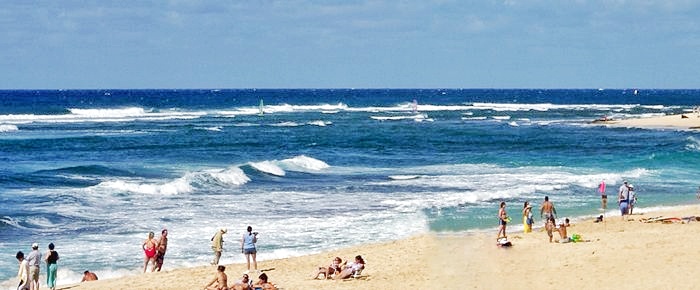
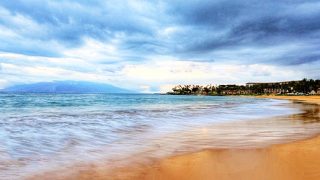
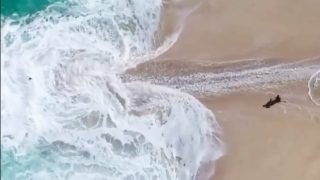
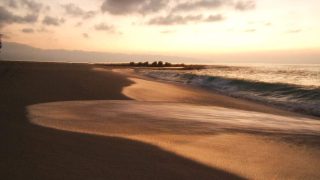
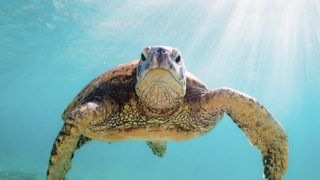
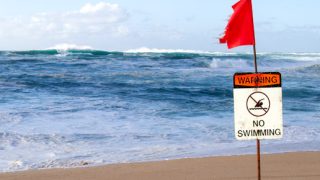

This article is so contradictory!
Blaming Hawaii when you’re saying there’s already signs, signs, signs! everywhere; warnings from lifeguards that *are* actually at *some* beaches; and “well-meaning locals”?
The blame is already far past being on Hawaii and its people; the “visitor information channel” on TV constantly warning about the ocean along with all the story ads about local attractions.
Is it more likely the mindset that these tourists that get into these situations are possibly thinking “if I’m gonna die, it’s gonna be in paradise”?
Maybe we need mental health workers evaluating people when they step off the plane!
If they never lived here before,
Force them into a timeshare-presentation style class on basic safety and charge them for the privilege!
If they aren’t already certified, make them take a basic CPR/First Aid class.
Would be one way to generate local jobs, too.
Take it seriously, already, if you’re gonna be like this.
If anybody is in need of a mental health checkup Sara it is the citizens of Hawaii that exhibit the textbook example of insanity because of how they keep voting the same way over an over again while expecting things to change in spite of the facts that nothing does after the elections. And what about the locals that die in the ocean? Do they get a pass because they live in Hawaii yet they Choose to ignore the ocean conditions too? Remember that one finger pointing out at tourists means that 3 are pointing back at you!
Having grown up in and near Lake Michigan, been pulled in undertows, had many minor water incidents, and had training from relatives who were professional swim teachers, and commercial boat captains, I was cautious but confident whenever I swam in Hawaii.
Never turned my back on the water. Never swam far or deep. Kauai was always kind to us.
And in Maui, in calf deep water, snorkelling, a wave rolled me, ripped off my mask, disoriented me. Luckily, others helped me up, got my snorkel mask, sat me on the sand.
I have not gone back in, except to wade, since.
The ocean has awesome power.
This prompts me to ask if anyone knows if details have been released regarding the snorkeling deaths of the couple at Ahihi? What kind of masks were they wearing? How did the coroner explain why both of them died?
When do the most visitors travel to Hawaii? What months are the least busy for airlines? Are there travel discounts from the airlines during the slow months?
Yes, and you can find all that info on the airline websites by searching dates & fares.
Alternatively, look up the Hawaii tourist authority website and they should have more statistical info.
Offseason for tourists is usually winter, when the waves are strongest and even more dangerous than usual.
I don’t get what you’re trying to suggest, here, because less tourists doesn’t equal safer anything, when it’s also the rainy-rainy season, so surfaces like trails are slicker and more muddy.
Hope that helped you plan your trip!
Swimming should be taught to children as a necessary life skill. Just like eating. The Ocean is everywhere and it’s not a swimming pool. But, teach your kids young. Somewhere! Respect water, be it white water rapids, the Ocean surf, or a lake. You’re not going to win.
I watched as two young women, both year around swim team participants, swam out too far. They had a very difficult time getting to shore. If it can happen to them, it can happen to anybody.
I don’t think Hawaii should have to pay lifeguards just for the sake of a few stupid people.
Your post makes no sense at all.
If two strong swimmers can get in trouble that is all the more reason to have lifeguards present.
How much is a life worth to you?
I disagree Rob. It is not the responsibility of the counties to pay for staff to ensure the safety of every individual at every public location. People need to take responsibility for their own actions. Signage and education should be sufficient.
Wow! Nothing says Aloha like letting tourists drown.
You set up a “straw man”, I did not say, “save every tourist at every Beach.”
Can’t Hawaii at least start at Black Rock?
I did ask ” how much is a life worth to you?”
Greg, your answer is obvious, callous and frightening.
Ignorance can be over come, but there’s no cure for stupid and stupid tourist are the ones getting hurt and drowning on Hawaiian vacations.
Most visitors simply don’t understand the sheer Power of the ocean in the middle of the Mighty Pacific far from any continental landmass. It’s not Cally Coastline swimming. There’s a genuine and grim reason for the warning so often given to tourists: “Never Turn Your Back on the Ocean”. Unfortunately too many disregard this as island theatrics and continue to believe that Hawaii is some kind of tropical Disneyland with imaginary and unseen “safeguards” in place. Too many find out how wrong they are in the worst possible way.
Best Regards
Thanks for raising awareness to all-too-common fatal accidents in paradise: A former Alaska neighbor and co-worker vacationing on Maui earlier this year became one of those victims. It was just a typical snorkling cruise not far off shore with perhaps 20 inexperienced persons looking forward to witnessing firsthand the marvels of the undersea world just below the surface. And it happened so suddenly when my friend lost his sense of flotation and before anyone on the crew noticed, he succumed. Jim E
There have always been a few people with an anti-authority mind set, but it seems to be a lot more prevalent now. No sign, no warning, no video will convince them that someone else knows better than they do. Unfortunately for their family and friends, some of them end up as members of the Darwin Society
The biggest issue is a lot of these people have either never been in the ocean before, or have been on beaches that have calmer waters. A rather large amount of the population has never stepped foot in the ocean, but maybe have been to lakes. They don’t understand that the ocean is a whole nother beast. Then you have people who do not know how to swim, but still go into the water. There was a lifeguard at Bondi in Australia that said “you wouldn’t jump off a cliff and expect to fly. So what makes someone think they can just go into the ocean and expect to know how to swim.” At the end of the day, people need to take personal responsibility. I do think having a safety video played before you arrive can help. Even if it saves one person, its making a difference.
We fly to Kauai on Halloween. I have been checking the surf report everyday for at least a month. Not because I plan to surf but to have an idea of where to avoid getting in the water. I’ve been reading about which beaches are typically the safest in November since May.
I repeatedly march up and down the biggest hills I can find almost everyday because I know an incline on a treadmill is not the same. I only plan on trying hikes rates moderate but know the humidity and elevation are vastly different than Chicago.
I’ve read about 2 recent tiger shark sightings and the dangers of full face snorkel masks. I’m doing as much research as I can to be a safe and respectful visitor.
#1 Pass a law that visitors are responsible for the cost of rescue when ignoring posted warning safety signs and or trespassing. That will get people’s attention. There should be a video shown on every flight into Hawaii when they aré a captive audience. The video should also touch on don’t touch or get too close to our endangered species. I see people swimming at Wailua falls and people heading out on dangerous trails in Koke’e with flip flops and babies on their backs! Big fines are an attention getting action. Just a warning sign doesn’t cut it. No one wants to see or hear of visitor’s misfortune while visiting our beautiful islands.
Captive audience!!?? Considering just how many people ignore the aircraft safety warnings and somehow you suddenly believe that they are going to watch and listen to the ocean safety warnings!? Now that’s truly comedic relief for today!!
We always put a note at the bottom of any email to Please don’t overestimate your abilities and please stay safe. when discussing Hawaii. Also to never use full face, face masks.
I grew up on the North Shore of Oahu and I remember body surfing at Big Beach on Maui one day as the waves were smaller than the North Shore. I was bodysurfing huge waves, did fine but I look back on that now, many years later and think, wow, I probably shouldn’t have done that. Absolutely wouldn’t do that now. I get how visitors will try stuff, it’s tempting, looks fun and like you say, we overestimate our abilities.
How sadly true. Watching the huge waves and expert surfers at Pipeline we saw a lifeguard leap from the stand and on to a four wheel scooter and race to intercept a couple looking to enter the water. Both were pale as early dawn, he was carrying a boogie board and looked as if he’d never been to a Hawai’i beach before (hard soled shoes, black socks, shorts, Aloha shirt, pork pie hat, cigarette dangling). Lifeguard had to argue with them against entering Pipeline’s shore break, pointing out the reef a couple of feet under the foam. That accomplished, he dashed to stop someone sitting ont he sand putting on fins.
Many thanks BOH. This has been an ongoing problem forever. With more tourists come more deaths or injuries. Maybe posting signs at the most dangerous beaches or trails with a count of how many people have died there because of the unseen dangers. However, I doubt the risk takers would heed that warning either.
The airlines have hours crossing the ocean on every flight to play a very well thought out video marketing and safety presentation that welcomes with aloha, as well as educates visitors on dangers/statistics of the islands. It could be done. It’s a question of Hawaii wanting to do it.
This is a great idea. The videos could be informative entertaining, and help prevent catastrophes. Why isn’t this being done already?
There’re also the people who are in a “once in a lifetime” mindset.
Gotta know your limitations. Over a couple of decades, I’ve saved 4 people from drowning at Black Rock on Maui. Only one would have drown since she had gone under twice by the time i got to her and I was the only one out there to hear her feeble cry. The other 3 were young, fit men who seemed to suddenly realize they were not in a pool and panicked. It’s Hawaii. People who have never snorkeled or been in the ocean deeper than their waist think they’re in the Sheraton pool and don’t have a clue of their limitations in a strange environment. Perhaps airlines could add more about ocean safety (hiking too) but will people listen? Rental car agencies could give out brochures but not sure psychology will change. Years ago an attorney from the mainland sued a hotel and Maui because she was bitten (just a nip) by a shark. Her claim, she should have been warned there were sharks in the ocean. Personal responsibility. If in doubt, don’t go out.
John A notes the risks of Black Rock Maui.
Who would imagine there are no lifeguards at one of the deadliest and busiest beaches on Maui?
Google search lists an interview with then mayor Alan Arakawa from 2014 promising lifeguards “soon”.
Ten years later and tourists still dying with no lifeguards.
Maybe they want tourists to die?
One response….Darwin.
We have the same issue here at Peggys Cove in Nova Scotia. All the signs posted ever 20ft say “stay off the black rocks” (those that are wet and slippery with wave action) yet, visitors are still swept out into the 4deg (39f) North Atlantic…survival time in water, 20min.
You can’t fix stupid!!!
We’ve seen those signs at Peggy’s Cove. Earlier this summer. You are not kidding that they are every 20 feet. We followed them and had no problem. I don’t know what the people who ignored them thought about them.
I agree with your statement about Darwin. People who ignore the signs are fools. We’ve been to Hawaii 30 times so far and have never had a problem. But, then, we don’t go looking for trouble, either.